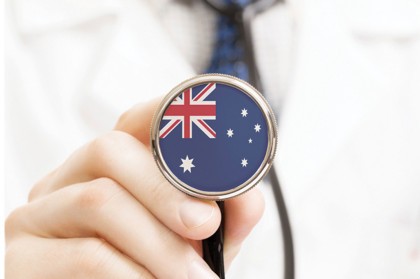
Australians are missing out on life-saving medicines that are readily available to most of the world, according to a new report from Medicines Australia.
The Compare (Comparison Of Access And Reimbursement Environments) report reveals that Australia is ranked 18 out of 20 countries in the Organisation For Economic Co-operation And Development (OECD) in providing access to new medicines. Japan tops the list, with Germany, the UK, Austria, Sweden and the US following. Australia is ahead of only Portugal and New Zealand.
The report looks at 247 new medicines that were first registered between 2009 and 2014. Only 39 per cent of these have subsequently been made available to the Australian public by being listed on the government’s Pharmaceutical Benefits Scheme (PBS). This is in comparison to 93 per cent in Japan and 80 per cent in the UK.
Dr Martin Cross, chairman of Medicines Australia, the peak group for this country’s pharmaceutical industry, says: “[Australia] treats every product that enters the system the same. There are two elements: the regulatory side of deciding whether the product works and is OK, and whether the product is cost effective. Other countries have a third tier: they accelerate the process when it’s a life-saving or breakthrough drug. They look at the broader impact,” he adds. “For example, if it stops people going blind, the true value of the product is invaluable because you’re changing people’s lives.”
According to the report, Australia falls further behind when it comes to the most innovative medicines, listing only 27 per cent compared with 93 per cent in Japan, 81 per cent in the UK and 68 per cent in the US. On average it takes more than a year to list new medicines on the PBS following their registration. This is at least three times longer than in the UK, the report says.
“Some patients can’t afford to wait. For example, there’s a new hepatitis C treatment [that] cures 90 to 95 per cent of patients with an eight-week course of treatment. In many other parts of the world, hepatitis C patients are being treated [with the drug],” Cross explains. “We currently have an estimated 230,000 Australians with hepatitis C, who in the later stages of the disease can die from liver failure. We have the chance to eradicate the disease in Australia. However, the product has to be shown to be cost effective in order to be made available.”
Cross says the government reformed pharmaceutical pricing in 2007 to get better value through market competition between generic medicine brands. “The aim was to save $3 billion by 2017. They’ve saved in excess of $20 billion,” he says. “We can afford to list these medicines.”
In response to this, Federal Health Minister Sussan Ley says: “Savings delivered in the past have been factored in already, new medicines have been listed, and many new medicines will need to be listed into the future. As a government, we have goals, including budget repair and sustainability and a better deal for consumers.
“At its November 2014 meeting, the PBAC [Pharmaceutical Benefits Advisory Committee] recommended the listing of medicines that will cost $1.5 billion. Last week, it looked at a record number of new submissions, potentially worth more than $7.5 billion – I repeat, $7.5 billion.”
Australian Medical Association vice president Dr Stephen Parnis says it’s a complex area, with the approval time making up one element of the process.
“While we’re low in the report, when you look at survival rates from cancer or heart disease, we’re better than eight of those countries,” he says. “In life expectancy we’re better than 12 of those countries.”
Parnis says the approval process needs to be medically and cost effective, and says the PBS system generally works well for us.
“To have anything less than this would cause problems,” he says. “If there were any unanticipated adverse outcomes, there would be hell to pay. Medicines Australia has an interest in getting more medicines approved because they’ll benefit financially.”
However, when it comes to new and potentially life-saving medicines, Parnis says there’s room to review the reimbursement process. “In the case of certain medicines, there may be a place for a fast-track approach. Look at genetic therapy for cancer. Ten years ago it was a concept being tested in a lab somewhere,” he says.
“Let’s speed up the process, but without cutting corners. We’re open to that.”
“I took a drug that was not yet available here and it changed my life”
When Suzanne Kay experienced a tingling sensation down her right arm following the birth of her first child, Ryan, in 2007, she was told it was most probably carpal tunnel syndrome. However, the symptoms worsened.
“I lost my ability to hold Ryan,” Suzanne says.
More tests revealed it was multiple sclerosis.
“I was unable to look after our little boy. We had to sell our house, my husband left his job, and we had to move in with my mum,” she says.
After four debilitating attacks in 12 months, with symptoms ranging from deafness in one ear to double vision, in which no drug had any impact, Suzanne stumbled upon a drug trial.
“It was a pure stroke of luck. My mum was working with a lady whose husband went to uni with a neurologist on the Gold Coast. He was doing a drug trial,” she says.
Suzanne’s neurologist at the time advised her against participating in the trial due to the lack of data available. “Thankfully, we went against that advice,” she says.
The trial was for a drug called Lemtrada, which works on the immune system to reduce the impact of the disease on the central nervous system. It involved five consecutive day patient sessions, receiving the drug via an intravenous drip for five hours each day. This was repeated over three days 12 months later.
Suzanne has been attack-free ever since.
“I get monitored every month, but this finishes in July,” she says. “And now I’m pregnant again. I’m due in August.”
Without access to Lemtrada, which at the time was widely available overseas, Suzanne would still be struggling with the disease and most probably wouldn’t be pregnant again.
“I can live a normal life now. I can do all of the things that are important to me,” she says.
As of April 1, Lemtrada was listed on the Pharmaceutical Benefits Scheme. It was first registered with the TGA on December 18, 2013.

Suzanne, 38 and her son, Ryan, 8
Medicine stats
383
The average number of days it takes after the registration of a new medicine for it to be listed on the PBS in Australia.
39%
The percentage of registered new medicines that were listed on the PBS in Australia between 2009-2014.
2.5
The additional number of months it takes for Aussies to get reimbursed access to new meds compared to other OECD countries.
573
For new cancer medicines, this is the average number of days between registration in Australia and it being listed on the PBS.
Source: bodyandSoul
 We are sharing information for knowledge. Presented by. SocialDiary.Net
We are sharing information for knowledge. Presented by. SocialDiary.Net



